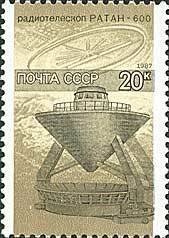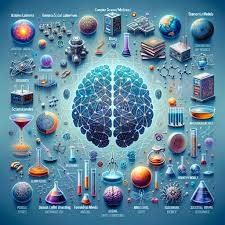Stamp: Science in USSR. (Soviet Union, USSR 1987)
Science in USSR. (Soviet Union, USSR 1987)
01 January (Soviet Union, USSR ) within release 150th Birth Anniversary of I.G.Chavchavadze. goes into circulation Stamp Science in USSR. face value 20 Russian kopek
| Stamp Science in USSR. in catalogues | |
|---|---|
| Michel: | Mi:SU 5776 |
Stamp is vertical format.
Also in the issue 150th Birth Anniversary of I.G.Chavchavadze.:
- Stamp - 840th Anniversary of Moscow. face value 5;
- Stamp - Birth Centenary of P.P.Postyshev. face value 5;
- Stamp - 150th Death Anniversary of A.S.Pushkin. face value 5;
- Stamp - Birth Centenary of S. A. Kovpak face value 5;
- Se-tenant - Soviet-Indian Festival. face value 10;
- Stamp - Birth Centenary of V.N.Podbelsky. face value 5;
- Mini Sheet - P.V.Vasil'ev "V.I.Lenin" face value 8*5;
- Stamp - Mary Curie face value 5;
- Stamp - Birth Centenary of John Reed. face value 10;
- Stamp - Birth Centenary of S.Ya.Marshak. face value 5;
- Stamp - 150th Birth Anniversary of I.G.Chavchavadze. face value 5;
- Stamp - 70th Birth Anniversary of Indira Gandhi. face value 5;
- Stamp - Birth Centenary of Nikolai Vavilov (1887-1943) face value 5;
- Stamp - Science in USSR. face value 20;
- Stamp - 90th Birth Anniversary of I. Kh. Bagramyan face value 5;
- Stamp - Soviet-American Intermediate and Short-range Nuclear Weapon face value 10;
- Stamp - 30th Anniversary of Asia-Africa Solidarity Organization. face value 10;
- Mini Sheet - River Fleet of the USSR. face value 80;
- Mini Sheet - European Art in Hermitage Museum. face value 8*5;
- Mini Sheet - Menzbier's Marmot (Marmota menzbieri) face value 40;
- Stamp - Birth Centenary of Karlis Miesnieks. face value 5;
- Stamp - Birth Centenary of Stasys Shimkus. face value 5;
- Stamp - Birth Centenary of V.I.Chapaev. face value 5;
- Stamp - Birth Centenary of I.A.Orbeli. face value 5;
- Mini Sheet - Polar Bear (Ursus maritimus) face value 40;
Stamp Science in USSR. it reflects the thematic directions:
Science is a systematic discipline that builds and organises knowledge in the form of testable hypotheses and predictions about the universe.Modern science is typically divided into two or three major branches: the natural sciences (e.g., physics, chemistry, and biology), which study the physical world; and the behavioural sciences (e.g., economics, psychology, and sociology), which study individuals and societies.The formal sciences (e.g., logic, mathematics, and theoretical computer science), which study formal systems governed by axioms and rules, are sometimes described as being sciences as well; however, they are often regarded as a separate field because they rely on deductive reasoning instead of the scientific method or empirical evidence as their main methodology. Applied sciences are disciplines that use scientific knowledge for practical purposes, such as engineering and medicine
A telescope is a device used to observe distant objects by their emission, absorption, or reflection of electromagnetic radiation.Originally, it was an optical instrument using lenses, curved mirrors, or a combination of both to observe distant objects – an optical telescope. Nowadays, the word "telescope" is defined as a wide range of instruments capable of detecting different regions of the electromagnetic spectrum, and in some cases other types of detectors.
Radio is the technology of communicating using radio waves. Radio waves are electromagnetic waves of frequency between 3 hertz (Hz) and 300 gigahertz (GHz). They are generated by an electronic device called a transmitter connected to an antenna which radiates oscillating electrical energy, often characterized as a wave. They can be received by other antennas connected to a radio receiver, this is the fundamental principle of radio communication. In addition to communication, radio is used for radar, radio navigation, remote control, remote sensing, and other applications.



